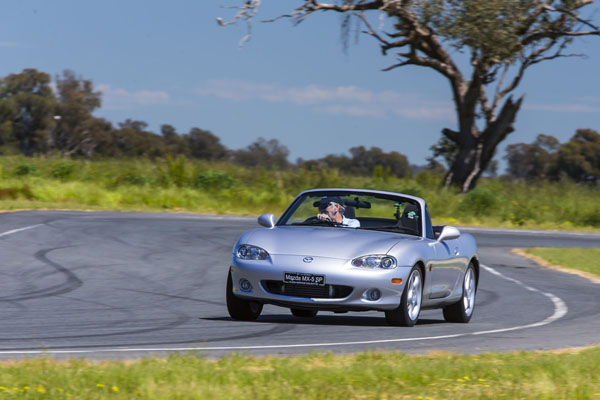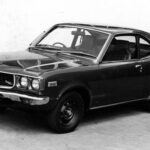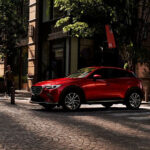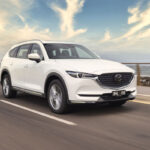I got chatting to Nobuhiro Yamamoto, the program manager of the ND series Mazda MX-5, this morning, and discovered we share a lot of timeline history. We both began in the automotive industry within months of one another in 1973, he as an engineer with the Mazda rotary engine research department, me in the technical section of the NRMA.
Keen on motor racing, Nobuhiro-san moved on to the Mazda RX-7 racing team in 1976 working as an engineer on cars that competed in major events, including Daytona, Spa and Le Mans. A few months later, working as a would-be freelance motoring journo, I had my first every car feature published, in Modern Motor magazine.
The year 1984 was a big one for us both; Nobuhiro-san began work on the famed four-rotor Wankel 26B racing engine that powered the Mazda 787 Group C racing cars. I joined Modern Motor mag full time as technical editor.
In 1990 Mazda entered the Le Mans 24-hour, the greatest endurance car race on the planet. At only its second attempt the Mazda 787B took the outright win in the 1991 Le Mans. The day after the historic 1991 victory I was at a Mazda car launch somewhere in Australia. I can’t remember where, or what the car was – but most definitely recall the amount of saki and whisky consumed with delirious toasts that went on for most of the night.
In 1995 Nobuhiro-san moved to the Mazda MX-5 team, as deputy program manager for the NB and NC series. Finally, in 2007 to head up the ND series MX-5 as program manager.

Nobuhiro Yamamoto, the program manager of the ND series Mazda MX-5 third from the left, with me standing to his right
He retired in July this year and was immediately appointed as Ambassador for all MX-5s. As part of his tour he was in Australia to host a day when all four MX-5 models were made available for journos to drive at the TAFE Motorsports Training facility in Wodonga, Victoria.
Mazda MX-5 NA Series 1989 – 1997
Engine: 1.6-litre 85 kW.
My first drive at Wodonga was in an NA from Mazda Australia’s museum. It was pretty tired in the engine department, the little 1.6- litre engine having covered just 50 kilometres in the last 15 years. A strip down and overhaul is in the offing.
The chassis dynamics still worked beautifully and the lightweight Japanese roadster was beautifully balanced. While the engine wasn’t happy revving, the gearbox worked smoothly and precisely and the brakes hauled off speed with ease.
A delight to drive and it brought back more memories, this time of driving an MX-5 at high speed around the Calder Park Thunderdome. Great fun – until the marshals got excited and read me the riot act.
Oh, and I love the pop-up headlights, though it’s unlikely we will ever see them on an MX-5 again.
Mazda MX-5 NB Series 1997 – 2005
Engine: 1.8-litre 106 kW.
While the other MX-5s on the test day were standard models the NB was the MX-5 SP, a turbocharged special edition that was developed in Australia by the legendary Mazda Motorsport man, Allan Horsely. Instead of the standard 106 kW it produced 157 kW, with 289 Nm of torque.
Naturally it was quick in a straight line on the Wodonga circuit, 6.0 seconds to 100 km/h, very impressive for its time. But the MX-5 has never been a big power machine, instead relying on its throttle response and chassis dynamics to please keen drivers. There was some turbo lag in the hot little SP, but we had felt a lot worse way back then.
Mazda MX-5 NC Series 1997 – 2015
Engine 2.0-litre 118 kW.
What really fascinated me was that the NC was even better than the NA and NB in the way it handled, crisp and instinctive with excellent feedback through the steering and the seat of the pants. Just when you thought something couldn’t be improved on … it was.
Performance comparisons are impossible due to test NA being down on power and the NB being a hotshot Horsley special. But the NC was good without being anything special in a straight line. It still felt taut, which shows why so many buyers of all models of the MX-5 series are bought as used cars.
Mazda MX-5 ND Series 2015 –
Engine 1.5 or 2.0-litre, 96 or 118 kW
Wow, what a difference. While the NB and NC were significant improvements on the original, the ND MX-5 had all the hallmarks of a car designed almost totally from scratch.
Nobuhiro-san was the program chief by this time and obviously put his heart and soul into every aspect of the car.
My first drive was of the 1.5-litre engine, a powerplant I’ve never been able to try on a closed road. Having a clear road and using the engine in the higher ranges of the rev band was great fun. I’ve previously said my preferred MX-5 engine would be the 2.0-litre I’ve changed my mind – that is if I was going to be using an MX-5 at track days, not trundling around town at low speeds, where the extra grunt of the bigger engine is useful.
Note: We have only covered the general Mazda MX-5 histories here, there’s simply not enough space to detail midlife changes and special editions.

The Motoring World Should Thank Mazda
It’s no wonder that the rest of the world’s carmakers took a close look at the Mazda MX-5 open sportscar in 1989 – then decided to build one themselves. Naysayers had pronounced convertibles dead during the in 1970s, saying they could never be safe. Mazda proved them wrong and has now built over a million MX-5s. Buyers of open-top cars everywhere are still smiling.













